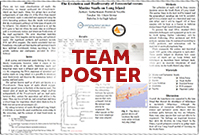Project:
An Investigation of Tree-Based Lichen Biodiversity on Red Maple Trees in Comparison to White Ash Trees Using DNA Barcoding
- Students:
- Julia Garfin, Ava Weiss, Cassian Gerasimenko, Theresa Yu
- School:
- Friends Academy, Nassau
- Mentors:
- Jennifer Newitt
Abstract:
According to Armstrong (1990), lichen have a higher growth rate on textured tree bark compared to smooth tree bark in the Northwestern United States. This led us to believe that trees with rough bark have a higher biodiversity of lichen. We are going to investigate the biodiversity of tree-based lichen to see if Armstrong’s findings are applicable on Long Island. We will collect 20 samples of lichen from various trees, 10 samples from smooth trees, and 10 from rough. After this process, we will extract the DNA of the lichen and replicate it using PCR to amplify a barcode region called ITS. Once we complete this, we will send it to Cold Spring Harbor Laboratory and they will have the DNA sequenced. We will then take this DNA Barcode and compare its sequence to other types of Lichen. We predict that we will have collected a more diverse population of lichen from the rough bark trees than the lichen grown on the smooth bark trees.



